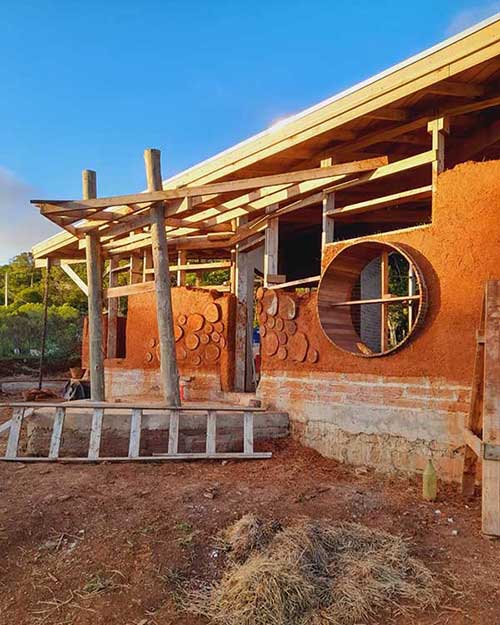Brazil is a country of natural beauty, but it faces the advance of concrete over green and environmental challenges. To seek sustainable solutions, architect and urban planner Vika Martins, from the Ohásis office, specialized in sustainable architecture, suggests bioconstruction as an alternative. “It’s using the wisdom of native peoples in their homes and proposing real solutions that allow us to build a better world”.
Bioconstruction consists of the use of natural materials such as bamboo, earth, straw, wood and natural paints, and techniques such as superadobe (clayey soil in polypropylene bags), wattle and daub (raw earth with wood, bamboo or vine) and cob (land excavated, mixed with water and molded by hand), among others. It also involves the concept of recycling and the use of rainwater.

The benefits of the earth are energy savings, reduced maintenance, environmental and health costs. “Conventional construction uses a lot of chemicals. It has a high environmental cost that we must consider. There is the question of energy efficiency, of a house that will cost more to cool and have environmental comfort”, emphasizes Vika. Bioconstruction also improves quality of life and breathing.
However, bioconstruction is still a growing market that needs to be disseminated. The architect and urban planner says that today there are few professionals who work with the earth and, therefore, the techniques are little known. To change this scenario, it is necessary to share knowledge and train biobuilders, inside and outside universities.
piercing the bubble
To spread knowledge and popularize bioconstruction, designer Kin Guerra and architect and urban planner Letícia Grappi created in December 2020 the collaborative platform “Mapa da Terra”, which maps works made with natural materials. Today, it has at least 307 constructions registered by users from Brazil and other countries, such as Venezuela, Australia, Italy and Colombia. Guerra says that the platform wants to connect professionals and those interested in bioconstruction around the world.
Letícia says that the practice has great potential for dissemination. “We are in a moment to discuss ways of living and impacting less. These discussions are still in bubbles. You need to expand. But there is a growing search for the subject and this is reflected in the construction. However, it is a crescent that needs to be much bigger for us to change the paradigm of society”.
Bioconstruction also faces taboos. Public policies erroneously associate the kissing bug with construction using sticks and daubs, for example. In some realities, there is also prejudice or mistrust about its durability. The president of the National Federation of Architects and Urban Planners (FNA), Andréa dos Santos, highlights the importance of supporting the initiatives of architects who make projects focused on environmental preservation and sustainability of the planet, as is the case of the Earth Map, to deconstruct this narrative. “We have many taboos to face. In a reality of precarious housing, difficult access to housing and self-construction in cities, it is necessary to disseminate practices such as architecture with earth to build a more sustainable future”.
The solution to expand the bioconstruction market and involve more professionals may be in the classroom. In universities, says Letícia, people traditionally study and work little with the subject. According to her, there is an “institutionalization of the stigma of building with earth”. Academic training ends up being exclusively with reinforced concrete. But there is a slight movement to the contrary, brought by professors and students who are interested in the subject.
An example is Filemon Tiago, bioarchitect and urbanist who idealized the Arqviva Project in his TCC, in 2022. The project operates in Aparecida de Goiânia (GO). “The objective is to return this millenary knowledge of bioconstruction to low-income people, without relying on conventional materials”, he explains. Through free courses, Arqviva promotes cooperation between the community and architects, and has become an extension project for architecture and engineering students, introducing them to Technical Assistance in Social Housing (Athis). A day care center is currently under construction that should house around 70 children.
Training more professionals in practice, whether architects or biobuilders, can generate positive impacts on the environment and on architecture’s performance models. Andréa also points out that “the more practices and options we give society to build better and more consciously, the more we can reach different layers of the population”.






